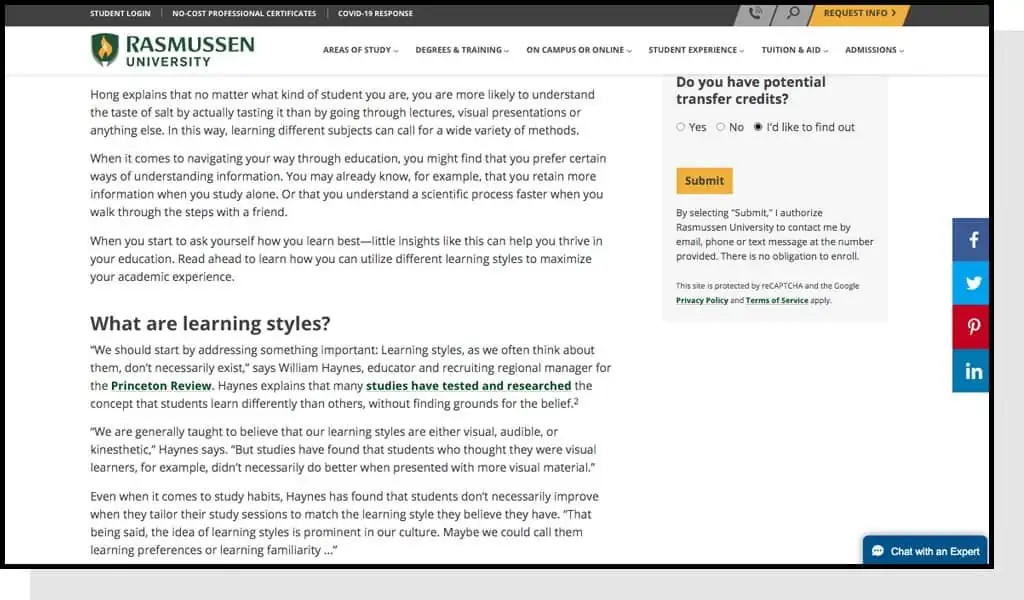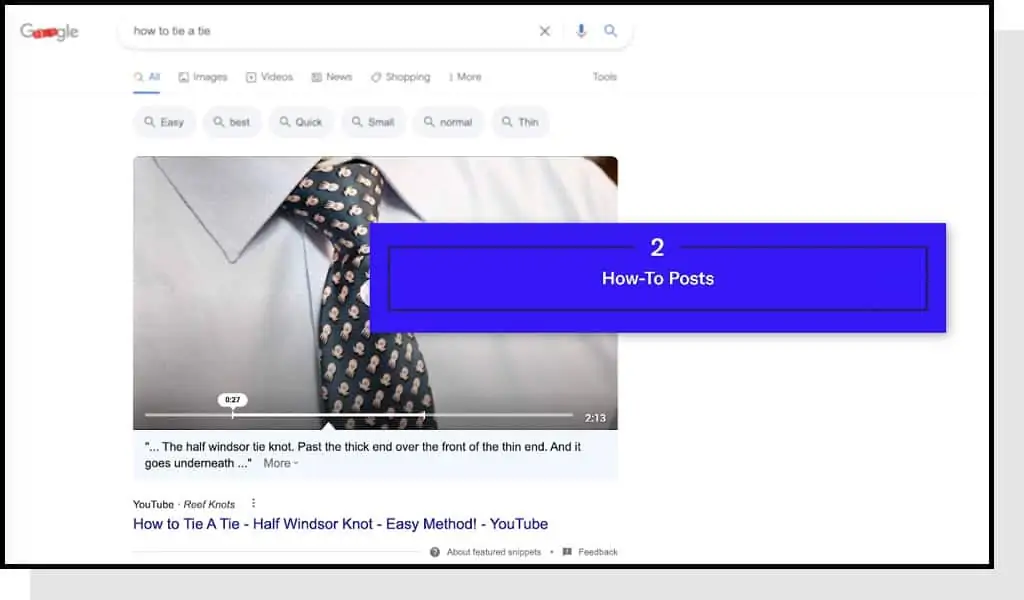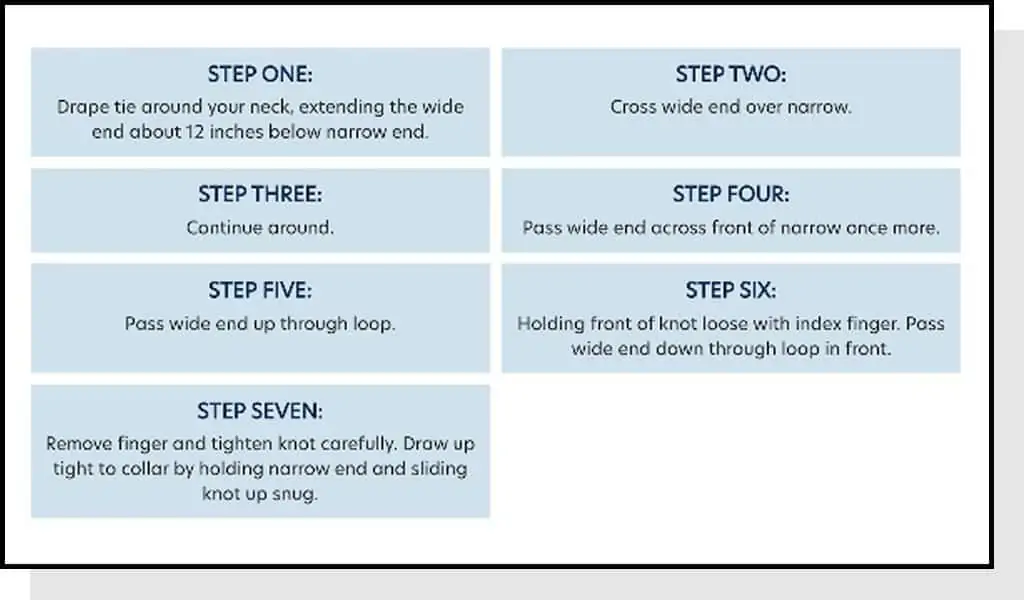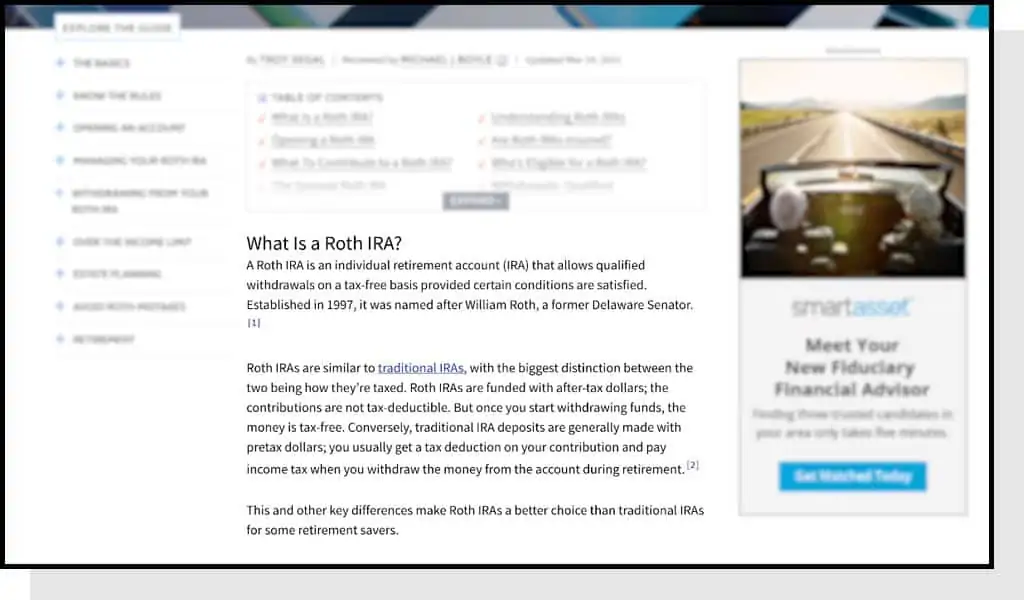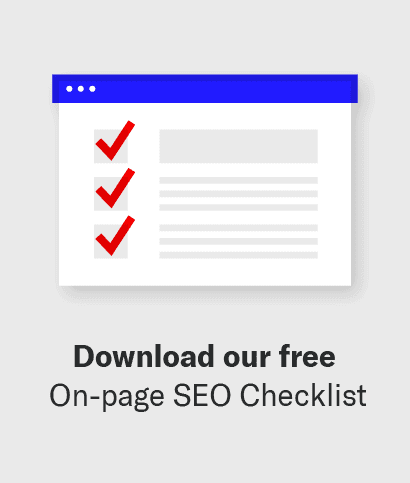Breaking news! The simplest post structure produces the strongest results.
Of course, “simple” can’t be used too literally. Finding the best structure when writing an SEO post can be tricky and there are different strategies behind every piece of content.
If you find yourself asking questions like, “Should my post cater to Google’s needs only?” or “What’s best for the user?” this is the post for you.
In this episode of Content & Links, CEO Ross Hudgens shares examples of how a simply structured post is the answer for both Google and the user.
Video Transcription
Simply Structured Posts and Quick Answers
Today we’re going to be talking about post structure for SEO, and what we believe is the most optimal way to structure your posts, in order to succeed in the search engines, and also do right by users.
Everyone’s aware of Quick Answers, the Answer Box, and getting into those areas.
To get into those, you need a simply structured post for Google to understand it and extract that information to get those quick answers.
Those have gone up and down in terms of overall relevancy and how many of those there are more recently, but regardless, think about those areas.
If you’re a robot, you need to find a simple structure to be confident that it’s actually giving you that list of say, “learning styles” that you’re looking for.
Otherwise, if you’re a robot, not having those H2s, H1s, H3s to quickly tell you the structure, makes it more difficult and therefore, you’re less likely to get pulled into that.
So that piece is not very arguable, but outside of the search engine result pages, there are still outcomes that I believe help, because it’s also what users want.
The fact that those knowledge panels exist, or the Quick Answer boxes exist, show that you just want a quick answer.
So by giving people a simply structured post, we also are solving for user intent.
Whether this is correlative or causative, giving a post a simple structure, in terms of hierarchy, will help us rank better and satisfy users because of that.
A bad example of this would be a post on say, “learning styles,” where you have an outline of the post and sometimes there will be a list of several H2s in the beginning or “what are learning styles” and then the history of learning styles, et cetera.
And then it finally gets into the actual list of learning styles.
That is actually a complex breakdown of learning styles as compared to the reverse where you would have learning styles and an H1, and then subheaders, such as, the actual name of each learning style in H2s, that are nouns.
Effectively, the H2s are nouns that factor in that learning style list to give Google confidence, to pull it into that area.
What people consistently do wrong is they will make these lists complex to create a big post by introducing things that don’t actually add value to the post.
That’s how we get back to user experience – preference simple structure.
As users, what you should do is take that core keyword, and then try to map a structure using H2s and H3s around that, that are simple to leverage and do.
So, for most examples, it’s simply the keyword being in the post title or H1, and then quickly giving the H2 variants of that, such as “wedding ideas.”
The first one might be “beach wedding,” two would be “outdoor wedding,” et cetera.
That’s quickly getting into that list, versus introducing H2s that don’t have value in that way – that’s the most obvious way of doing that.
A lot of search results that are listicles, especially, you will see this structure being rewarded in terms of what’s ranking best.
Whether that’s correlated or causative to better rankings, I’m not sure, but I’m pretty confident that it does correlate because it’s a good user experience to do that.
That doesn’t mean by nature, not having a structure won’t help.
One way you can get around this is sometimes knowing when you can break the rule.
I think sometimes adding detail that’s more complex will be worthwhile, because maybe you do want to add an introduction before you get into those learning styles. That might actually make it more linkable, and get you more links, which then outweighs that other ranking signal, to pull you up.
It’s a combination of factors, but the most impactful is to think about the main keyword, and then structuring the rest around H2s for the most common keywords.
How-To Posts
Other examples of this are “how to” posts.
Looking at “how to” posts, the most common structure that would quickly give Google confidence to extract into the Quick Answer and also rank you better would be something like “how to tie a tie.”
Then step one would be – I wish I knew that off the top of my head.
I don’t wear ties that often, but step one would be that step, in an H2, the next H2 would be the exact same thing, et cetera, et cetera.
You can see and find examples on the internet where people will often muddy this, or maybe they actually put that list of steps in H3s, often other H2s.
This can seem more complex to Google and users, giving them less confidence that you actually are a good result for that.
Giving very clear step indicators, such as step one, colon, take that step to try to tie a tie, step two colon, take that step to try to tie a tie, makes it reasonable and simpler.
So for Google, as an additional confidence builder, the “step” in the word helps.
I think you can also do “one dot” blank, but I consistently do see step one, step two. It’s just another kind of common characteristic of a “how to” post that creates confidence and also as a user experience signal as well.
I always think about it in that way, in terms of how you’re bringing together user experience signals with also what we believe is good for Google.
Definition Type Posts
Another common post type that comes into these quick answers very frequently are definitions or “what is”’ type posts.
There’s a few ways to do this based on the structure of your website and client.
The ideal structure is actually to get this above the fold.
In this example, we can see a website that shows a definition right after the post title as a subheader.
This often seems like a subtitle, and it’s not great that you’re immediately giving someone the ability to bounce, but people you actually want as a customer will probably be more likely to stick on page, and this is going to help you rank better.
I think it’s the right thing to do, given this structure, to immediately define it.
It says, “What is an IRA?” – merely defining “an IRA is” blank is the common confidence building structure where your main definition is, or “keyword is” blank.
It is that exact thing Google would look for in terms of confidence to say, this is the definition.
What I see people often do wrong is they’ll say “what is” blank, and then they’ll go on about some story of their childhood before actually getting into the definition.
That’s not actually going to drive much confidence and it’s also going to confuse Google and/or confuse users, which again is what we’re trying to avoid.
I recommend if you have a lot of “’what is” posts is to do some kind of structure like this, which benefits your overall content strategy.
Should that not be feasible, and you just have an image below the post title, what I would suggest is “what is” blank, and then some add-on detail that will give more context of what else will be in the post besides the definition.
This will eliminate redundancy when you get into the definition pretty quickly.
So, have a paragraph or two describing what you’re about to talk about.
Then, the next H2 can be, “what is” blank again, just by itself. This will create confidence that this is exactly the definition.
The next sentence after that should be “definition is” blank, which again, is the exact structure that gives Google confidence.
It’s very high in the post structure, making it great for the overall user experience that we’re highlighting that.
Another reason this matters is because you’re lowering the distance between the query by the user on Google and Google is getting the answer by simplifying the structure of that post.
Additionally, don’t go on rambles when you have a subheader or an H2 or H1 that says, “what is” blank, but immediately say, “keyword is” blank and you’ll most likely be successful.
Some ways to kind of counteract this and break the rules as it were in terms of post structure is if you have to lead in with some other H2s on that lead list of learning styles, what you’ll then want to do is restate the keyword to show that you’re about to restate that list again, to Google.
If you did have an introduction and you thought it was very important to say, “What are learning styles?,” you would want to then say restate it, hopefully in a non-redundant way, such as the “7 best learning styles” as an H2 – this would be picked up by Google.
Ideally, it’s not too deep into the post. And then H3 is under the same list of nouns or learning styles, as we previously discussed.
This would also be easy for Google to confidently extract, should you not be able to use that even simpler structure we talked about previously.
This is the “B” version of that other one and can be warranted should you just realize it is actually accurate for users to give it that structure.
Maybe that will get you more links, which gets you more rankings, et cetera, et cetera.
But when I see content that is poorly performing time and time again, I think it often has a complex structure or a hard to extract structure.
If it’s difficult for users to understand, it’s difficult for Google to understand.
I think you’ll find if you do some A/B tests on this for these posts, with poor structure, you update them, you submit them to be recalled, you’ll see a pretty immediate jump into better rankings based on Google trying to solve for these kinds of things in their search results.
Again, your mileage may vary, but at the end of the day, I would think about this as a user experience signal.
It’s hard to argue that getting users their answer quicker is effectively what people want today.
And if we can structure our posts in the simplest way possible, we’re more likely to be successful, overall.




